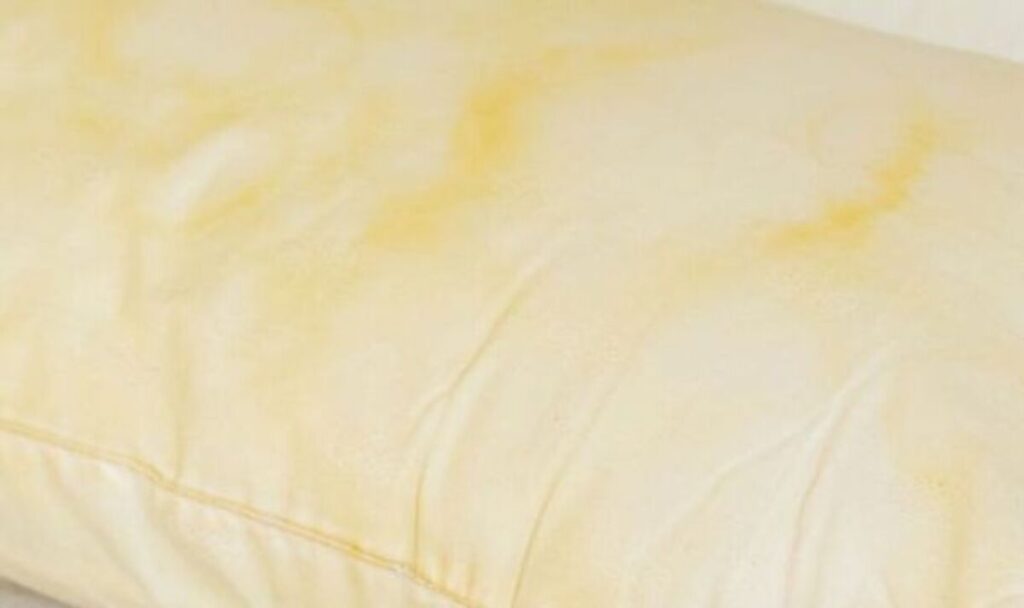Dirty pillows and pillowcases can lead to numerous issues such as bad odours and poor sleep hygiene. This can trigger allergic reactions or infecting lungs, and pillows should be cleaned every six months, and replaced every one to two years. This will also ensure they continue to be supportive, which is important in preventing back and neck pains. Taking to social media, Mrs Hinch fans have shared various methods to clean pillows and remove sweat stains.
There are a number of different reasons why marks may appear on pillows, including sweat and saliva stains. However, it isn’t just sweat and saliva which may cause that nasty yellow stain.
Other sources of moisture such as going to bed with wet hair or drooling throughout the night are also common reasons why marks may appear.
Not only are they stubborn to remove, they can be unsightly too and so it is best to tackle the stains as soon as they appear.
Posting on the Mrs Hinch Cleaning Tips Facebook page, Sarah Roseanne wrote: “Morning all. I need help to remove yellowing from pillows and pillow protectors, what are your best tips please?”
READ MORE: Seven houseplants that remove dust and toxins from the air
Britons can also put their pillows in the washing machine, if the care label suggests it. To help prevent the pillow from going floppy, adding a tennis ball into the machine can help keep its shape.
According to experts at Dreams, pillows should be washed at a minimum of 60C. While this may not get rid of stains, it can help to get rid of nasty bacteria.
Dreams’ experts said: “Like sheets, dry them quickly and thoroughly. However, as up to a third of the weight of your pillow can be made up of dead skin, bugs, dust mites and more, washing them after hot weather can be beneficial.
“In fact, an average unwashed pillow can contain 16 species of fungi. To avoid this, it can be a good idea to choose hypoallergenic pillows or ones with cooling credentials.”

